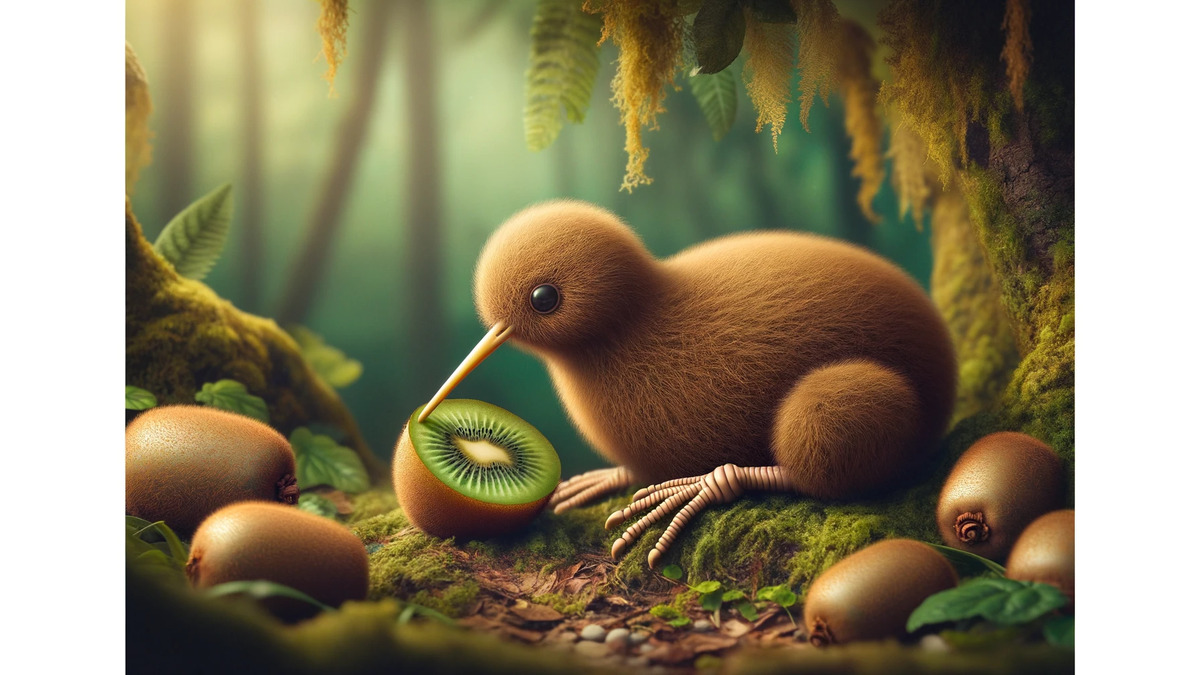The kiwi is a bird native to New Zealand. It has an underdeveloped wing structure and its body is large in relation to its wings, so it does not have the ability to fly.
Kiwis also lack a tail, as shown here.
They lay fairly large eggs among birds despite being about the size of a chicken. Their eggs can weigh up to 20% of the female’s body weight. To give an idea of how big they are, their eggs are almost as big as those of the emu, the second largest bird in the world, although not as big as those of the ostrich.
Incidentally, if you think of the weight ratio in human terms, it is similar to giving birth to a four-year-old child.
But the size of the egg is in some ways no mystery. The kiwi is actually a bird belonging to the order Ostracoda, which includes the giant ostriches and emus.
Only the kiwi has nostrils at the end of its long beak. They use these nostrils to probe the ground and sniff out invertebrates without seeing them.
As well as their noses, they have very acute hearing and can spot predators, mates and prey in the dark at night.
There is a reason for this. In fact, the kiwi’s eyes are among the largest of all birds relative to their small size. However, most of them are hidden under their feathers. Moreover, they have relatively poor eyesight. They therefore rely far more on their sense of smell to navigate their environment.
Although seemingly docile, they are territorial and can be aggressive, using their strong legs and sharp claws to defend their territory. They are quite fierce. This is a shocking sight for anyone, including myself, who has seen kiwis sleeping peacefully in zoos and other places.
In the area of family life, kiwis are also known to be monogamous. Usually, couples are together for life, sharing nesting and feeding duties. The term kiwi couple is even used as a synonym for a close-knit couple.
Turning to social behaviour, kiwis are usually solitary and only interact during the breeding season. This may suggest an adaptation to resource scarcity in their environment, or a strategy to reduce the likelihood of attracting predators.
Being nocturnal, they sleep during the day and forage at night. This is a feature that protects them from predators and is more akin to mammals than to many birds.
Kiwis can live for 25-50 years, a surprisingly long life span for a bird. Their longevity is thought to be due to their remote woodland habitat, where they avoid humans and predators.
Their feathers are more like hair than the feathers of a typical bird. It is not waterproof like the feathers of many birds.
Although flightless, the bird’s small wings are actually hidden under bristle-like feathers. And this flightlessness, combined with their ground-dwelling nature, sadly makes them vulnerable to non-native predators such as dogs and cats, highlighting the unintended consequences of human interference in the ecosystem.
The bird differs from the majority of birds in that it has marrow-filled bones rather than the hollow bones commonly found in birds. This peculiarity is another factor in their inability to fly, making them more similar to mammals than to feathered birds.
In terms of diet, they are omnivorous, feeding on invertebrates, seeds, gall midge and a wide variety of worms, showing opportunistic feeding behaviour to survive in a variety of habitats and conditions.
Body temperature is relatively low for a bird species. The average body temperature of the kiwi is 38°C, compared to 40-42°C for other birds. This low body temperature may be an adaptation to the birds’ low metabolic rate and ground-dwelling lifestyle.
Five species have been recognised, but the differences are so subtle that even experienced ornithologists have difficulty distinguishing them in the field.
Finally, let’s look at the kiwifruit. Originally from China, the fruit was known until the 20th century as the Chinese gooseberry. However, in producing and exporting the fruit, New Zealand used the fame of this pretty bird as a brand name and it became what it is today.



コメント